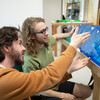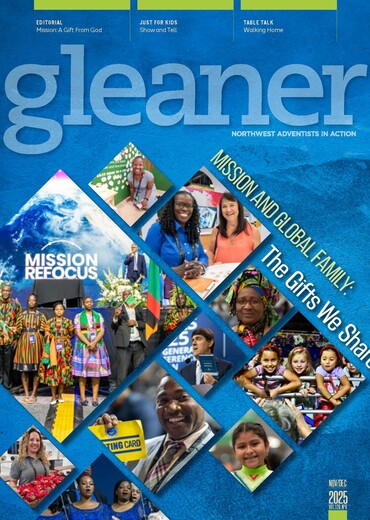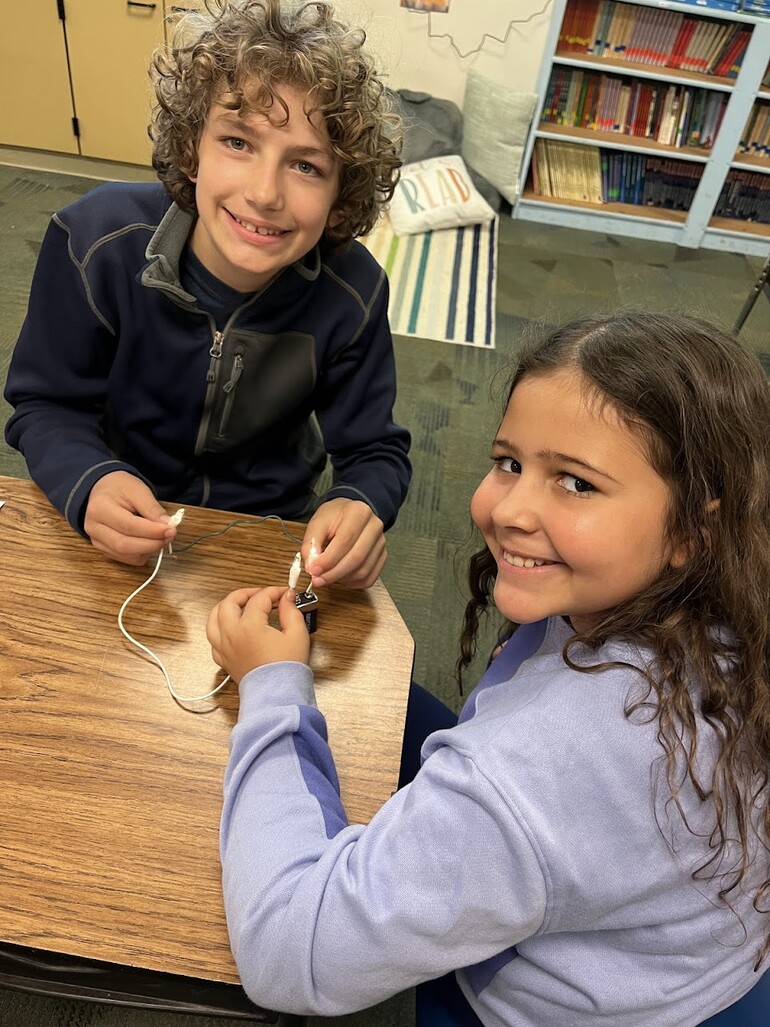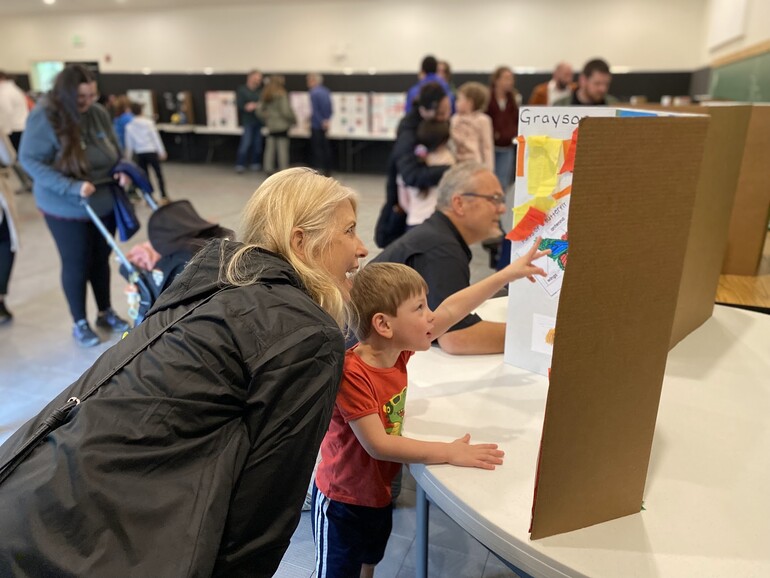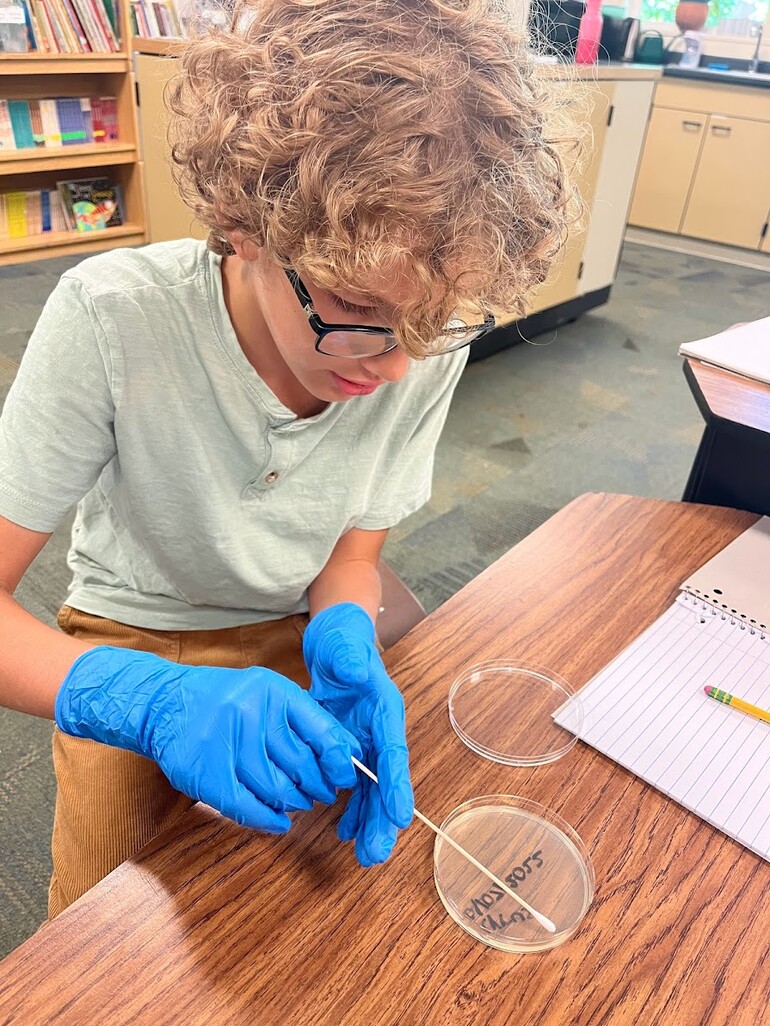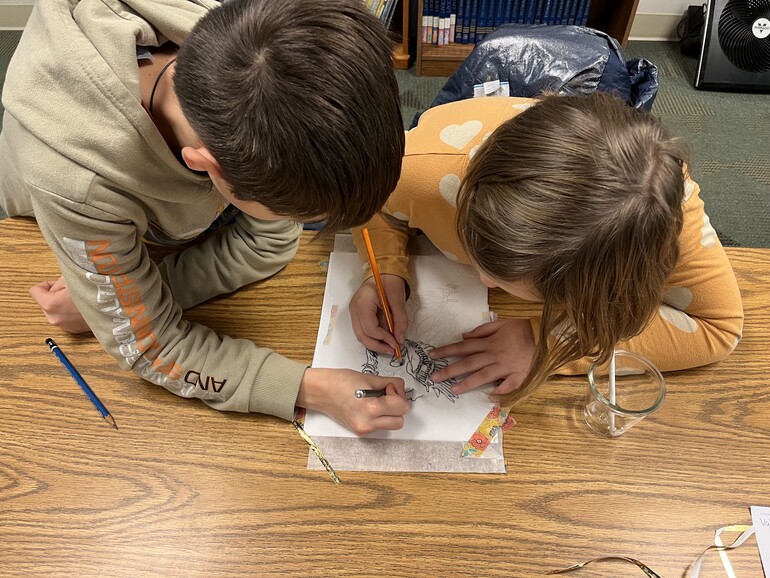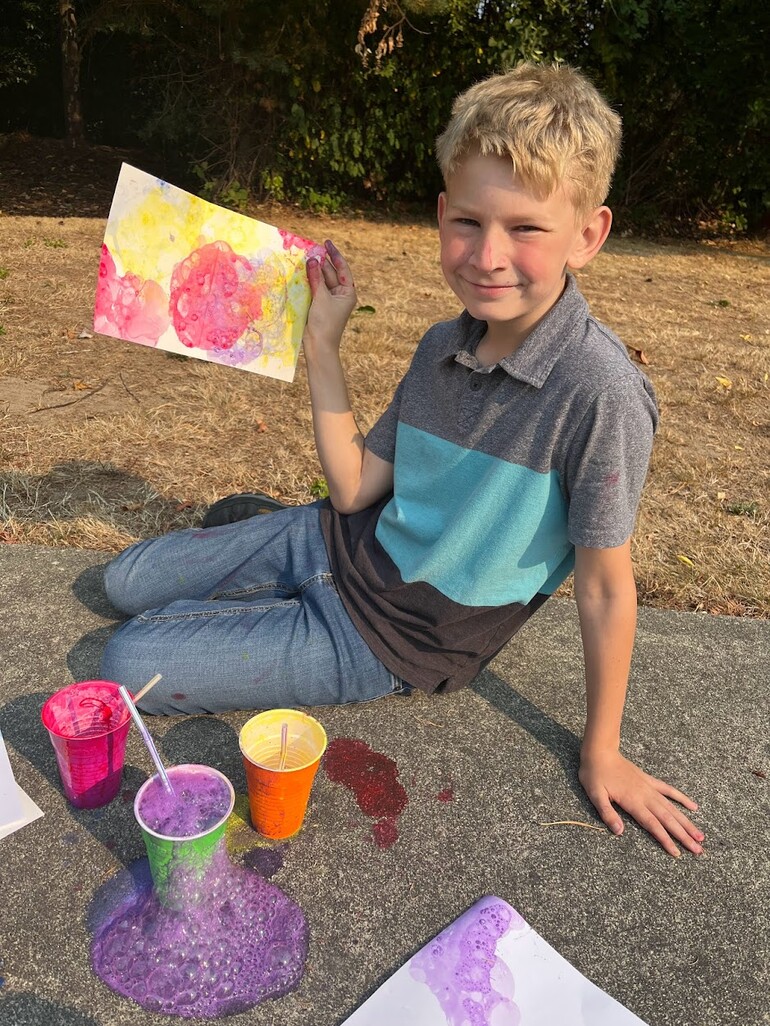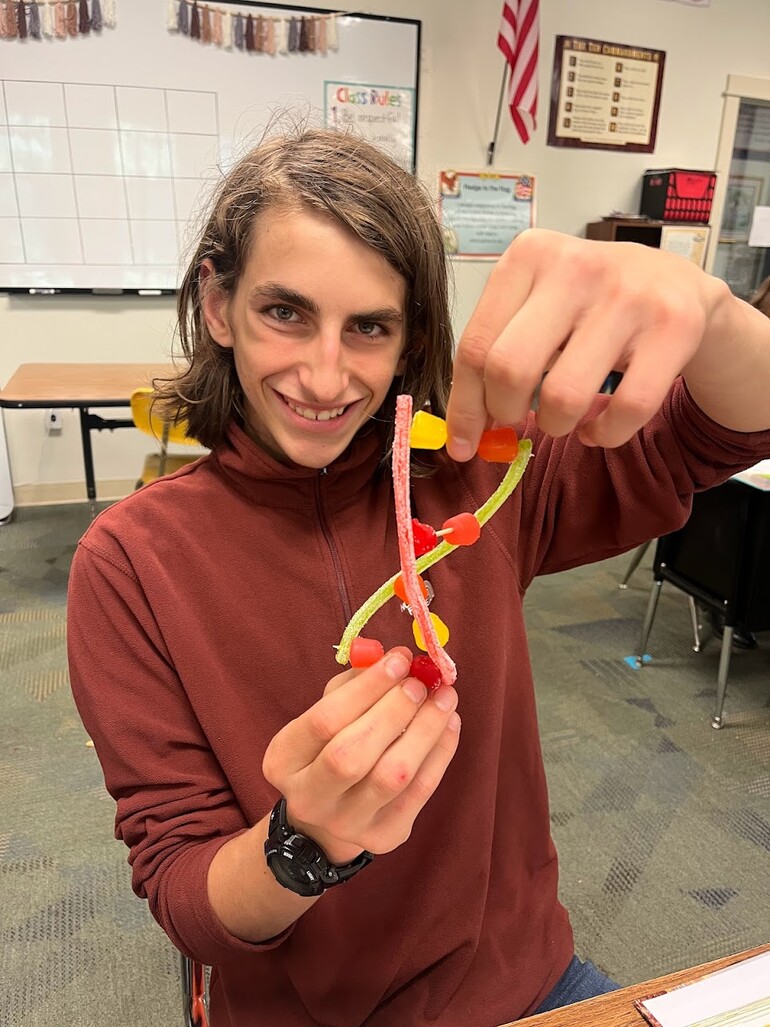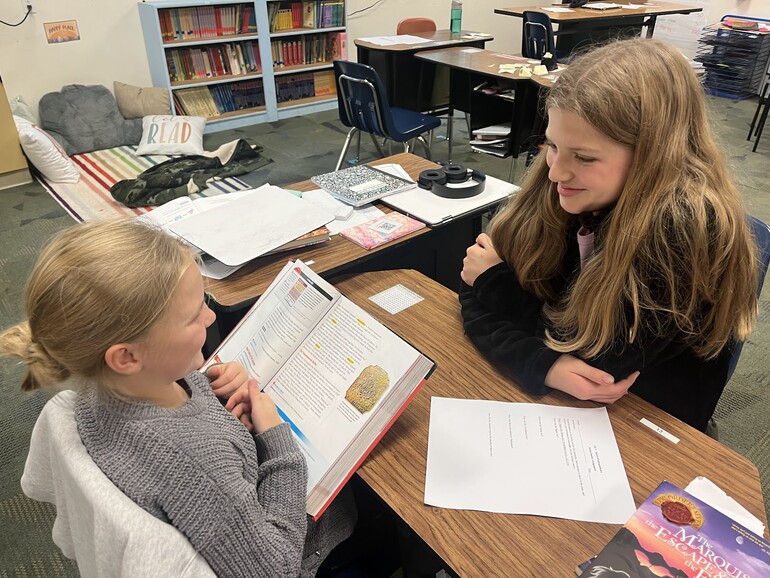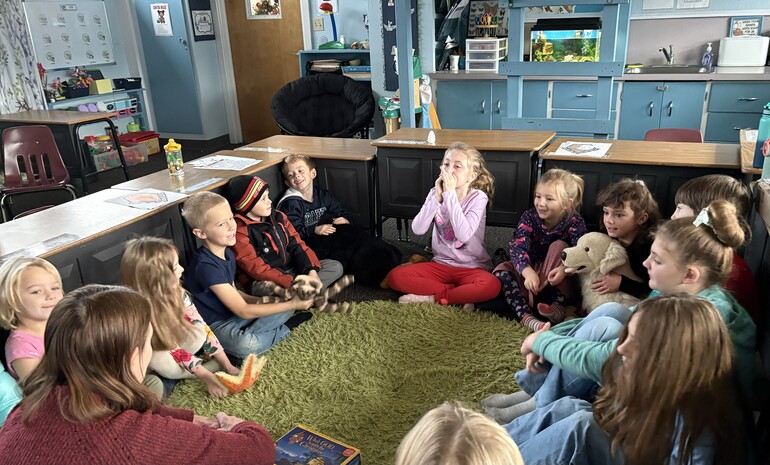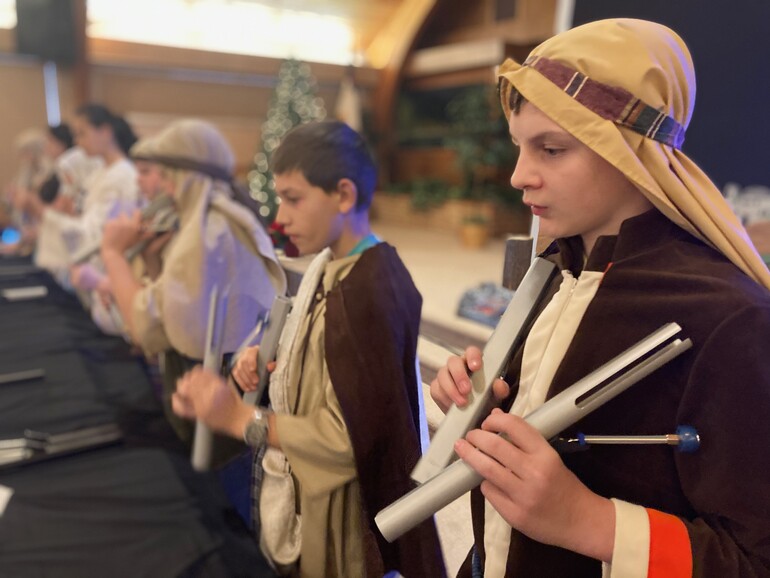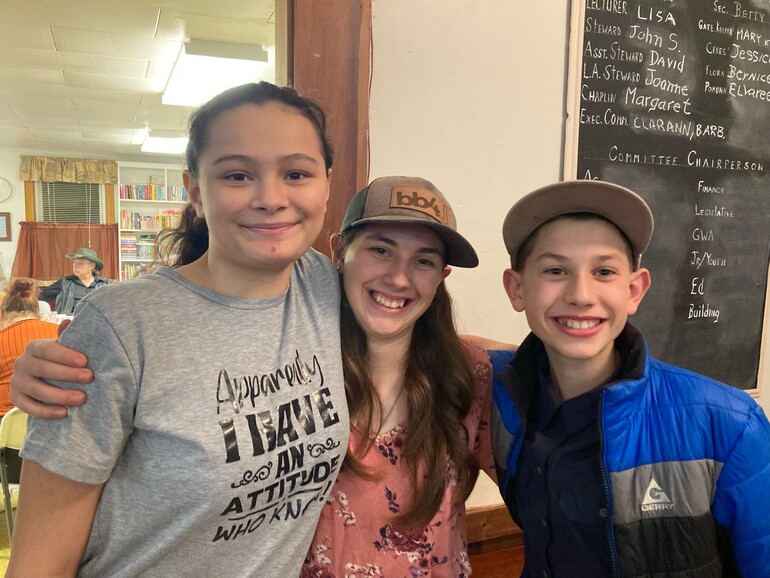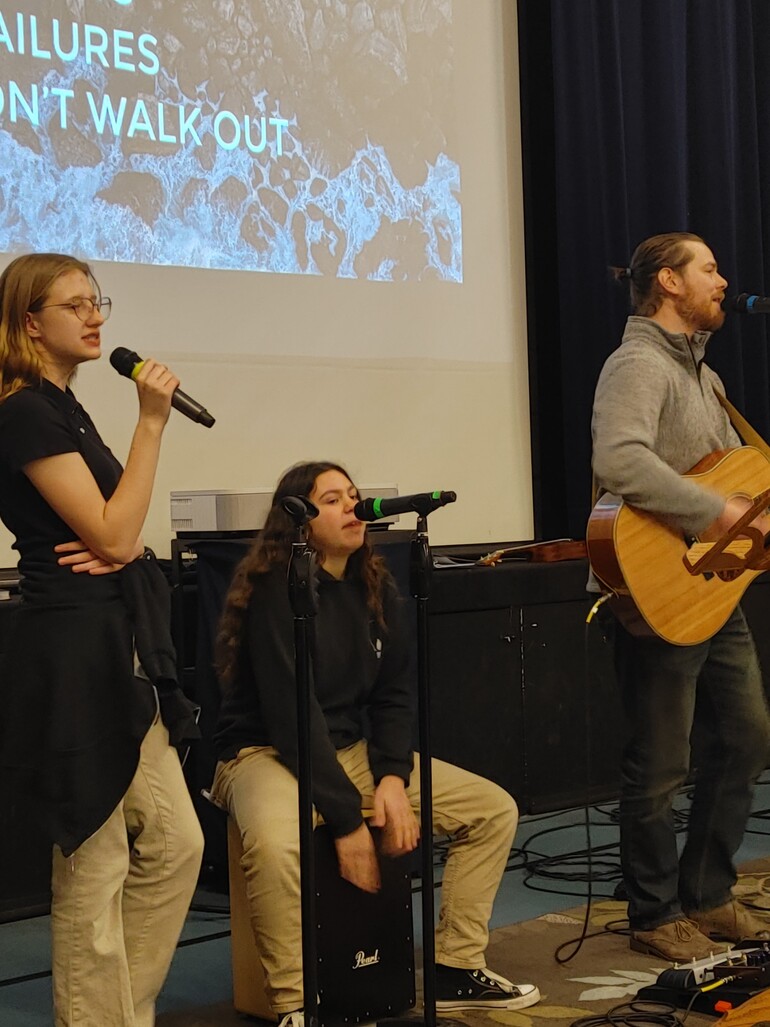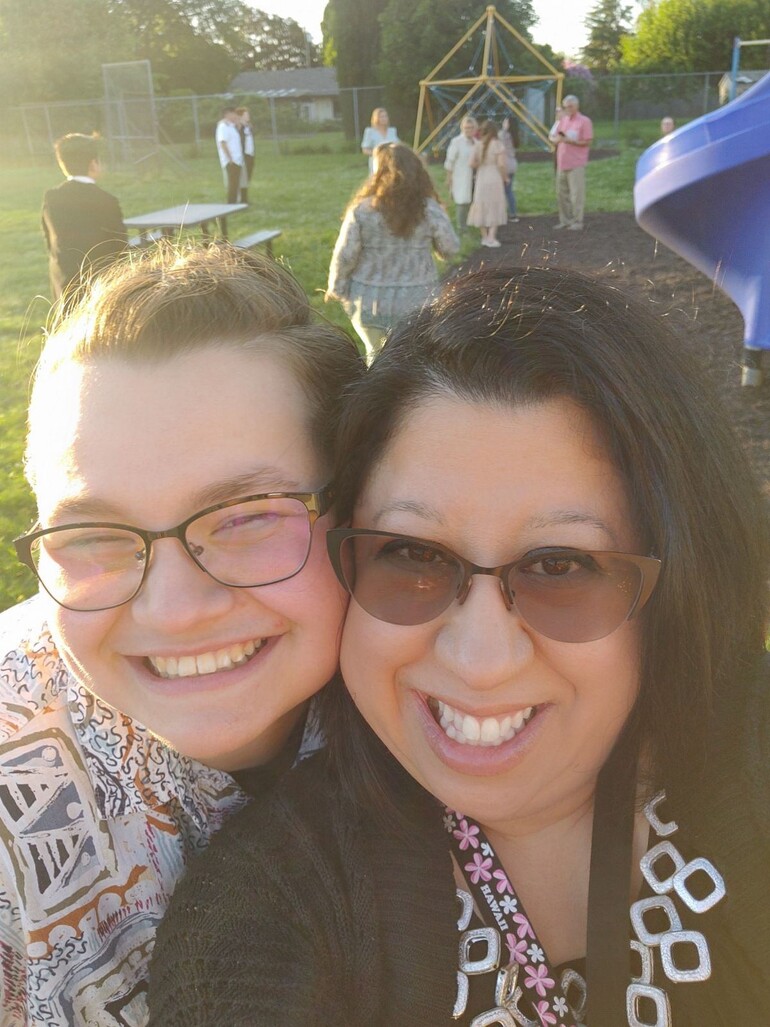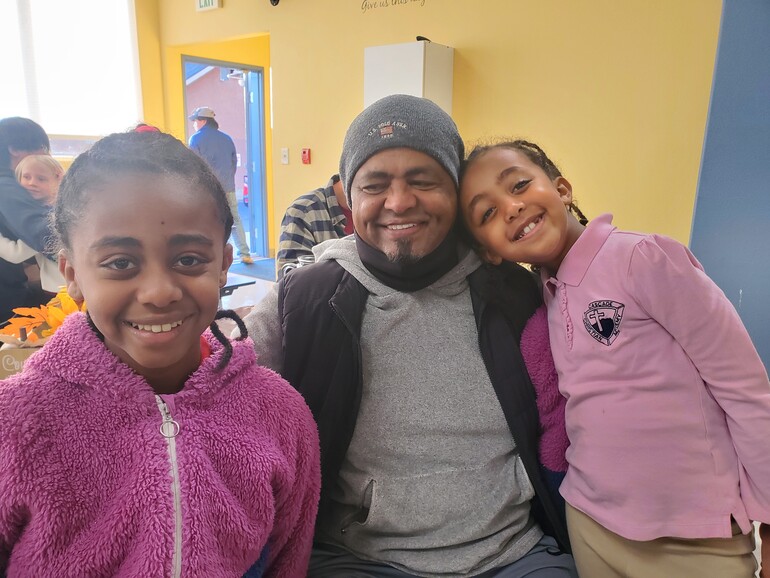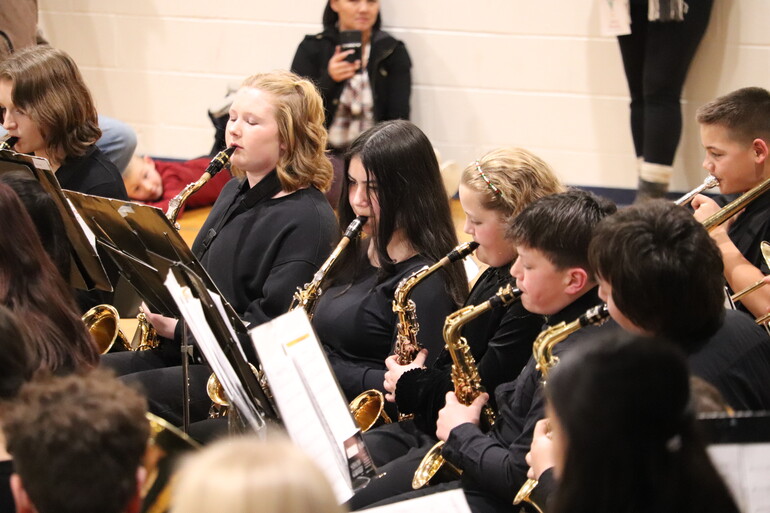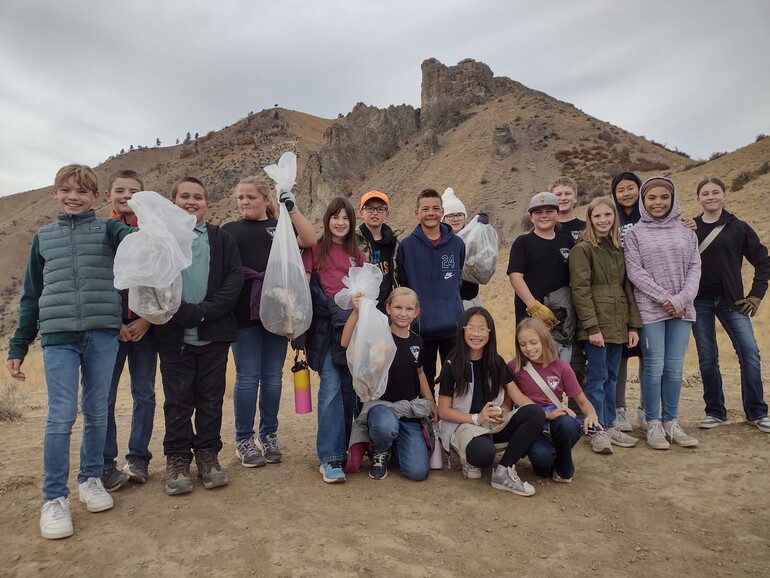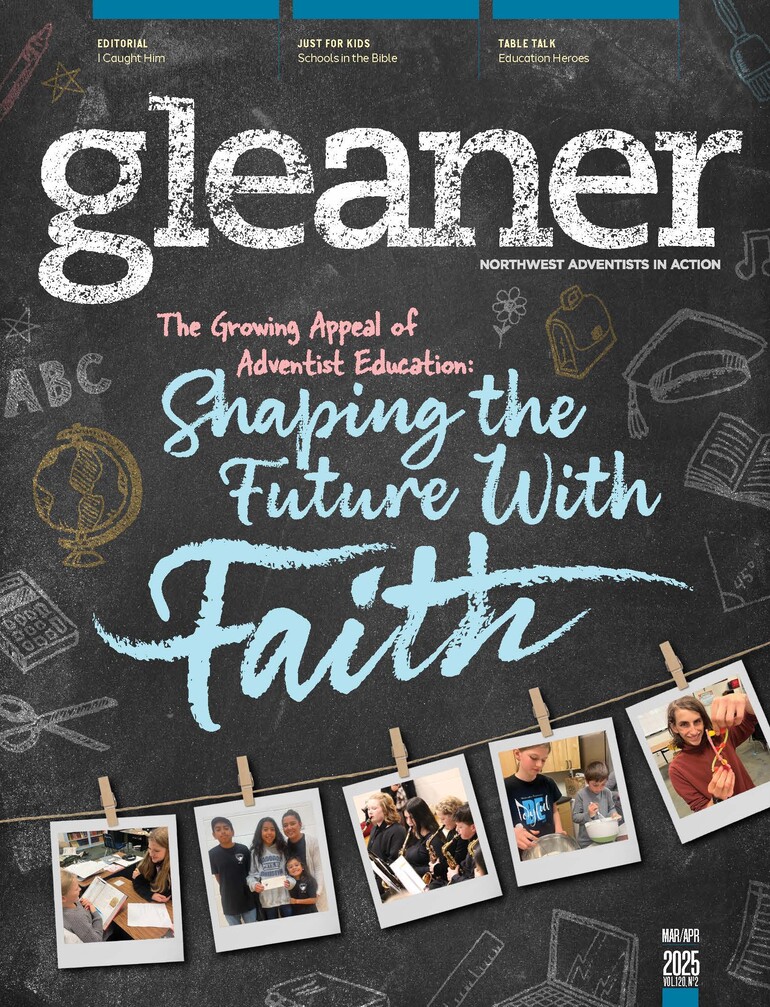As the world grows more divisive and self-focused, families are searching for values-based education that fosters both academic and spiritual growth. Many have found a home in Adventist schools, where students are nurtured in faith and character, preparing them to flourish in an ever-changing world.
Since 2020, when the pandemic uprooted traditional learning, an increasing number of community families — those unfamiliar with Adventism — have discovered the rich, nurturing environment of Adventist education, where young minds and hearts are shaped for a brighter future.
This reality places Adventist schools in a unique situation as a ministry to the world around them — starting in the classroom with, as Ellen White intimated in Child Guidance, 306.1, “teachers ... who are missionaries."
Poulsbo Adventist School
“A lot of our families, though perhaps not Adventist, come from Christian households, and they go to church regularly on Sundays,” explained Judelle McCormick, Poulsbo Adventist School principal, located in Washington. “They send their kids to our school because they want them immersed in those Christian values during the week, too.”
Adventist education shares those Christian values, making Adventist schools a top choice for these families, though there are, of course, some differences.
“Details like vegetarian-only lunches and dress codes not allowing jewelry are opportunities to connect with the families and explain where we come from and why we believe what we do,” said McCormick.
Only 15% of PAS’ students are Adventists. To reach community families at home, PAS provides each family with a 10-volume Arthur Maxwell The Bible Story set, because they understand that the books minister to the whole family. Any family who reads the entire series together has their registration fee waived for the following school year. Most families do it.
“Children’s values and beliefs are formed around what their parents believe,” McCormick said. “What we do at school impacts primarily the student, and we are always looking for ways to minister to the whole family.”
Enterprise Adventist Christian School
Many times, when a community family comes to an Adventist school, they know little to nothing about Adventist beliefs. Some have only recently learned that the schools exist or that people not affiliated with the Adventist Church are allowed to enroll. Located in Oregon, less than 9% of Enterprise Adventist Christian School's student body comes from Adventist homes.
“One of our families came across our website, and our mission statement really resonated with them,” shared Dona Dunbar, EACS principal. “The community has gotten to know us through the Vacation Bible School program we do every summer. They like what they see and want their kids to be in that Christ-centered environment regularly.”
A few years ago, a community family sent their children to the school’s VBS and loved it so much that they enrolled their two children at EACS the following fall.
“When the younger son was in my class, he explained to other students from non-Adventist backgrounds that Sunday was not the true Sabbath but that Saturday was,” Dunbar recalled. “Despite only recently learning about Sabbath, he was convicted it was truth and wanted to inform his friends, as well.”
Word of mouth is very helpful in spreading the word about Adventist schools, especially in smaller communities. In addition to annual VBS programs, EACS regularly invites local homeschool students to accompany them on field trips. “Connecting with families before they enroll at our school allows them to get to know us and helps them feel safe sending their kids to us,” Dunbar explained.
Amazing Grace Academy
Sometimes just being outside and doing what Adventist schools do is enough to pique the interest of those new to Adventist education. In 2024 when Ryan Rogers, Palmer district pastor, took a group of students from Amazing Grace Academy in Palmer, Alaska, on a backpacking trip three hours away, they encountered a family out hiking. The family was also from Palmer, and, after chatting and walking together for a while, the family ended up camping with the AGA group and spending Sabbath with them. Their children are now enrolled at AGA, which is currently 70% community students.
“They were drawn in by what we were doing and the acceptance they felt from our group,” explained Karen Carlton, AGA principal. “Making those connections with local people really makes a difference in their understanding of who we are and their interest in being part of that.”
McMinville Adventist Christian School
Each of these principals makes it clear that appealing to the broader community does not mean Adventist schools are hiding who they are.
When a family wants to enroll their student at McMinnville Adventist Christian School in Oregon, they first meet with the principal for an intentional, carefully constructed interview. This interaction sets the groundwork for a positive, transparent relationship between family and school. Questions include:
- How did your journey bring you here?
- What do you hope your child will gain after a year of being at our school?
- How can we support your child in being successful?
- What questions do you have?
“We make it very clear that we are Adventist not only in name but also in curriculum,” explained Elizabeth Fish, MACS principal. “In all the years I’ve done this and all the families I’ve sat across from during this conversation, I can only think of two who had any sort of misgivings.”
One of those misgivings was a family concerned about having their child attend chapel every week. Fish invited the parents to attend the next chapel so they would know exactly what it was.
“They came and sat in the back with arms crossed in the beginning; afterward when I asked what they had noticed about it, they commented on how the kids all seemed to enjoy the program, and no one got in trouble for not singing,” Fish recalled. “The process of being open and transparent allows parents to see us for what and who we are.” Currently, 65% of MACS’ student body does not come from an Adventist background.
Cascade Christian Academy
Cascade Christian Academy in Washington follows a similar process. Stephanie Gates, CCA principal, meets with any interested family and walks them through what they can expect when sending their child to an Adventist school, giving them time to ask any questions they might have, as well.
“I’m very upfront about our Bible curriculum specifically,” Gates commented. “I explain what makes us different from other religions and show them the curriculum their students will go through in their specific grade.”
Families at CCA, 70% of whom are not affiliated with Adventism aside from the school, are encouraged to bring any questions or concerns they have to the teacher. Though the school and its teachers stand strong in their Adventist beliefs, what students experience in Bible and every other class is respectful of each student’s personal background.
“The most instrumental piece of building trust with AGA has been the consistent connection with the teachers,” shared Miranda Bower, current AGA community parent. “I always know the teachers have time for questions or clarifications and they are always quick to help. My kids are surrounded by staff and families who love and appreciate them and are teaching them how to be wonderful God-loving humans. I couldn’t ask for a better place to help me raise my children.”
Truly what it boils down to is having a heart for Christ.
“Ultimately, we all love God,” said Gates. “We may have different ways of interpreting the Bible, but we don’t have to agree on everything to get along and be respectful toward each other.”
Carlton agreed, adding that it’s important to create an environment of sharing, not arguing and approaching conversations from a biblical perspective.
“We always go back to scripture,” Carlton said. “Classroom conversations should always allow for questions and exploration, and we encourage our students to talk to their parents about what they believe and what they do at their home churches. We teach what we as Adventists believe, but what we believe is from the Bible, and they can see that.”
For Adventist students, the opportunity to engage with peers who come from different faiths and backgrounds is hugely beneficial to their social development, Gates pointed out. “A lot of times we surround our kids — and ourselves — with people of like beliefs,” said Gates. “Our teachers are really good about giving all students a chance to share what they believe about a particular topic, and they discuss it as a class. It’s less an ‘us vs. them’ mentality and more a perspective of 'here’s what we believe, but let’s talk about the different ways this can be interpreted and hear from those at our school who think differently.' It’s a growth opportunity for everyone involved.”
Gates has experienced this personally when her own children came home and shared something a classmate said at school that didn’t jive with what they’d been raised to believe. “We always go straight to the Bible, dig in and see what we think about what it says,” shared Gates. “Our paths will inevitably intersect at some point with people who have different beliefs, and we have to know how to be respectful, understanding and loving when they do.” It all starts in the classroom.
It also starts with language, as Carlton pointed out. “We are really intentional about not using the term ‘non-Adventist,’” Carlton said. “We do everything we can to reduce barriers and differences, so we have Adventist families and community families. We never want anyone to feel less than.”
Experiencing a diverse student body is beneficial for everyone. It’s not only a ministry to those new to faith or Adventism; it’s also a ministry to Adventist students as they learn how to navigate this reality. “If they aren’t equipped to interact with others positively, we’ve failed them,” McCormick said.
It’s not just the community students who are forming new understandings of personal faith at Adventist schools; all students are learning to talk to and listen to God, understand the Bible and develop their own belief system. All students, regardless of background, are being ministered to.
This mindset fits within White’s instruction to parents and educators in Child Guidance. White wrote, “The Bible should be made the foundation of education. … Youth from the world … will connect with these schools and … this kind of missionary work … will have a most telling influence in extending the light and knowledge of truth” (CG, 310.1). White also stated that “the most essential education is that which will teach [children] the love and the fear of God” (CG, 298.2).
“Our teachers are very intentional about laying biblical foundations for everyone in the classroom,” Fish said. “At this point in their lives, all the kids are learning to pray and really getting to know who God is.”
The focus is on relationships. “Who is Jesus to you?” Fish asks. “If Jesus means something in your life, what does that mean for how you act and how you treat others?”
Because teachers intentionally and dedicatedly share Adventist beliefs both inside and outside the classroom, principals say it is crucial to set expectations from the very beginning.
“We have to be unapologetically Adventist but love with a Christian heart,” Fish explained. “We ask all of our people to base their experience at our school on mutual respect. We respect their beliefs and we ask that they respect ours, as well, because they’re choosing to be here. They know what they’re getting here.”
One family, when seeking admission to EAS, asked Dunbar, “Will you accept us even though we’re Catholic?” She of course enthusiastically responded in the affirmative. “Our main thing is to share Jesus with these kids, and Jesus taught us that everyone is important,” Dunbar said. “This includes being sensitive to their needs and belief system, even if they’re different from ours.”
Parents at AGA are invited regularly to attend Friday morning chapel programs and other activities during the school day, so they can see and hear what their students are seeing and hearing. “This builds their trust in who we are and what we’re doing,” Carlton commented.
Families from other backgrounds are frequently surprised to learn how similar many of the beliefs are between Adventism and their own Christian faith. “When we have conversations about their concerns, they don’t see big enough differences to scare them away,” Carlton said. “They understand our goal is not to make their kids Adventist, but to help them learn about and develop a relationship with God. That’s our goal for all of our students — Adventist or not.”
The impact of Adventist education ripples into their local communities, too, as schools instill Christian values in young people and teach them how to implement those values in everything they do — wherever they go.
For example, the theme in McCormick’s classroom this year is “We Are the Light of the World.” Each week, as a class, they come up with “light initiatives,” or activities they can do to be God’s light to the people around them.
“Sometimes it’s in the community, sometimes it's at home and sometimes it's right here at school,” McCormick explained. Thus far this year, students have delivered encouraging notes to people at school, left cards with Bible verses on them in grocery stores to be found by shoppers, made dinner for their families and conducted a food drive for the local food bank. “The kids are genuinely excited to be doing these things,” said McCormick. “They come up with the ideas themselves, and it’s so fun to see how God is working in their lives and inspiring them to be more Christ-like.”
The community notices these little gestures and that the students at the local Adventist school are different — in a really good way.
“The people there genuinely care about everyone,” said Sandra Brownridge, MACS community parent of two former students. “They don’t just say kind things because it’s expected; they genuinely care for others’ well-being and truly love seeing them.”
Before enrolling at MACS, the Brownridge family knew nothing about Adventism, though they were non-denominational Christians, so the school’s values fit neatly within their own. “All the core elements of Christianity and biblical teachings are there,” Brownridge said. “They introduce the kids to God and what the Bible says about Him, and that’s what’s most important to us as Christians.”
Their time at MACS made Brownridge’s children more confident in their faith to the point where they both requested baptism. Despite not wanting to join the Adventist Church, a local Adventist pastor was happy to baptize the students as a public declaration of their faith. “The fact that they were open to that was beautiful to us,” Brownridge shared.
When Brownridge’s children transitioned to high school, it was hard for them to say goodbye to MACS. “Their new school is amazing, but MACS is home,” Brownridge admitted. The family attended MACS’ Christmas open house in 2024, despite no longer attending school there, simply because they enjoy being in that environment.
These feelings stick with families, and some schools, such as PAS, are starting to see the impact of Adventist education in community families through the generations. A few current students are children of former PAS students. “They remember their experience here, and it was positive,” McCormick said. “They want their children to have that, too.”
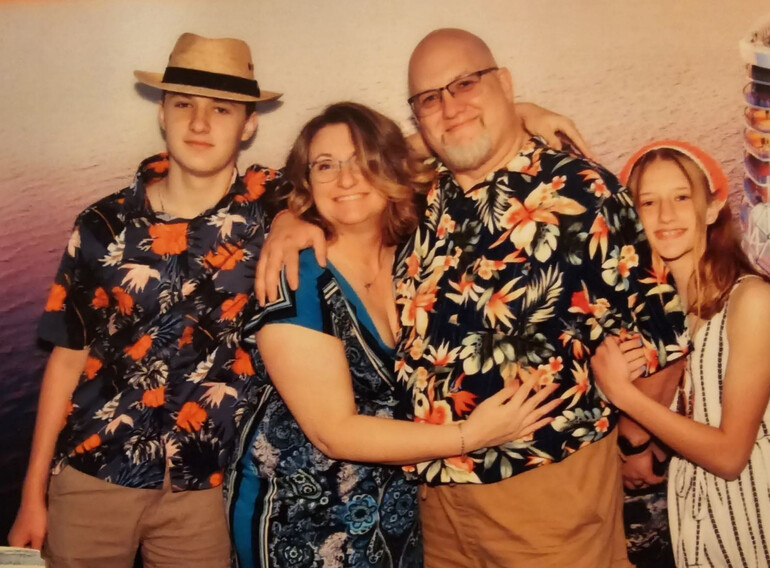
Sandra Brownridge and her family.
The notable increase in students from other backgrounds in Adventist schools can be alarming to some who may feel a school that is not majority Adventist will “water down the truth” or make the schools “less Adventist.”
“This is where churches, pastors and families can step in,” Fish stated. “It’s a partnership. We’re laying the foundations of character development and how to love like Jesus, and our churches can teach them how to learn like Jesus. We’re tilling the soil every day — sometimes planting, sometimes fertilizing.” And while the schools approach education from a decidedly Adventist perspective, their primary doctrine is Jesus.
“Ultimately, we want these kids to love Jesus,” stated Carlton. “We want them to come face-to-face with Jesus at our schools and learn to love Him. And when they move on from here, their paths might just bring them to our church.”
Fish pointed out that the Pacific Northwest is largely unchurched — not affiliated with or connected to any church. In Texas, where Fish grew up, people ask what church you attend. In the Pacific Northwest, she said, people ask what god you believe in — or if you believe in any god at all.
“Kids are going home and teaching the parents what they’re learning at our school,” Fish shared. “Parents frequently ask me to explain Adventist beliefs because their kids say things at home they don’t quite understand. It’s an incredible opportunity for dialogue.”
Fostering a spiritually nurturing environment for a diverse student body isn’t quite as complicated as it initially sounds. With a focus on Jesus and the Bible, the Christian values and biblical lessons supporting all Adventist school curricula mesh well with the guiding life principles most families share. The biggest challenge, Gates said, is keeping kids engaged as they get older.
“It doesn’t matter what their background is, Adventist or not, students all struggle with distractions such as peers, technology, anxiety and, of course, adolescence,” Gates explained. “Being a teen or pre-teen is hard, and sometimes their spiritual life is the last thing on their mind.”
Carlton agreed. “Often we take the spiritual atmosphere for granted,” Carlton commented. “We assume that, because we’re Adventist and we’re within Adventist walls, of course our school is going to be Christian. But that isn’t something we should leave to an assumption.”
With this in mind, schools are doing their best to keep spirituality front and center in everything they do. At AGA, Carlton said they have been very intentional with their spiritual focus. Each month they hone in on a specific spiritual practice, and, over the course of the school year, students will have spent significant time exploring prayer, service, praise, thanksgiving, personal devotions and others. Toward the end of the year, one of their monthly foci will be “Sabbath.”
“It’s not just about the day of the week we go to church,” Carlton explained, “it’s about giving our time to God, taking a rest and stepping away from the everyday. We’re really excited about the opportunity to have conversations with our students and their families about the full meaning of Sabbath and why it’s so important to us as Adventists.”
The reality is that our schools are mission fields, and it is crucial that we recognize them as such and act accordingly.
"What Does it Take," a 2014 article from adventistmission.org, commented on 1 Cor. 9:20–23, in which Paul lists the people groups he “became like” in order to win those peoples to Christ. The article states: “This was not a compromise to his Christianity and beliefs, but … he knew that reaching others would be enhanced by identifying with them … Jesus left heaven and became a man in order to better serve us. Likewise, we need to be sensitive to the ways and needs of others as we serve them.”
As the population of community students in Adventist schools continues to increase, it is important that we remain mission-minded and “sensitive to the needs” of those we are serving.
“Often in our denomination, we talk about overseas missions because we do it so well,” Gates commented. “But truly we have many more opportunities here every morning, five or more days a week.” CCA visits each of its six constituent churches during the school year, and, because their students are involved in the program, community families are attending Adventist churches six times per year, experiencing Adventism and meeting Jesus in each of those congregations.
“Some families have told us their kids are asking for family worship at home,” Gates added. “They’re asking tough questions that send the parents digging through the Bible for answers. Kids who don’t have Bibles at home are asking for them, so because of these students, their families get a Bible. That’s a mission right there.”
“We’re in the field planting seeds, just like any missionary,” said McCormick. “At this time in their lives, all of our students are building their faith and making those important decisions, so we just keep praying and sowing those seeds. That’s the best thing we can do.”


